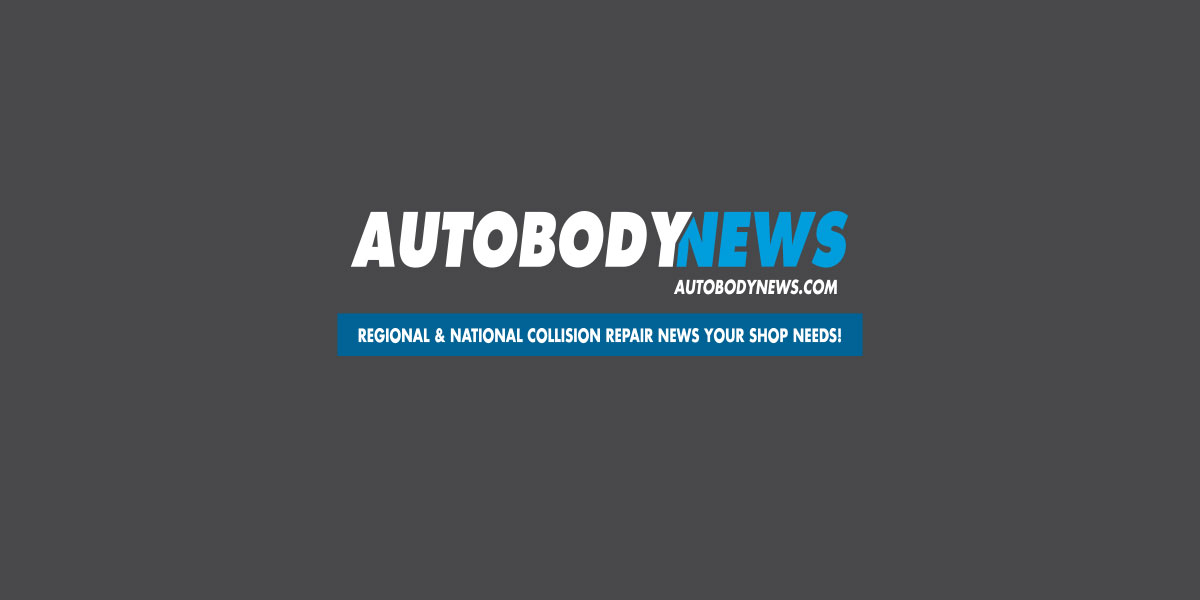With nearly 23 million vehicles involved in accidents annually---a statistic that is trending upward, according to Vincent Romans, The Romans Group---body shops across the country are being faced with deciding if they should repair or replace non-structural components during the repair process.
“Sometimes we jump to replace and don’t consider certain things when a repair might be a better bet,” said George Avery, Avery Consulting LLC, during a recent Guild 21 podcast sponsored by VeriFacts.
The podcast focused on the decision-making process in regard to interior parts and plastic repair.
Avery said there are five decision points body shops can consider. First, is if the damage is an appearance issue that doesn’t affect the part, such as a scrape on a transmission case. Next, an analysis is typically done to determine if a repair should be performed. If the answer is “no,” the body shop can then decide to use a recycled part, aftermarket or new OEM.
“It all depends on critical thinking,” said Avery. “Through repetition or habit, sometimes our critical thinking doesn’t work so well.”
As a result, he encouraged podcast attendees to use critical thinking and consider all options and expenses when making a decision.
“The repair procedures are our guideline,” said Avery. “If new is the best bet, there is nothing else you can do. If you think of the mantra ‘fix it right, fix it smart,’ repair certainly has a place.”
During the podcast, Avery talked about making the decision of whether it makes sense to repair versus replace and some of the challenges with estimating, tools, technicians, subletting and overall business decisions.
Many estimators don’t consider repairing the part for a variety of reasons, said Avery. They may be new to the job and unfamiliar with certain repair techniques; they may have had a bad past experience; it could be because of the tools and technicians; or they may not be compensated in a way that a repair is conducive or desirable based on performance goals.
During the Guild 21 podcast, Scott McKernan, president of #1 Vinyl & Leather Repair, and Kurt Lammon, president of Polyvance, were invited to speak about some of the important considerations when making repair versus replace decisions.
Interior Parts
McKernan, a 35-plus year collision claim industry veteran, said that many shops---even those that have operated for many years---are uninformed and often have no idea that certain parts can be repaired.
“A large portion of trim panels that are currently being replaced could have easily been repaired if they would have just gotten a ‘trim quote’ first, thus simplifying and expediting the return of the car to the customer,” said McKernan.
The company currently offers the trim quote system primarily in California and plans to expand to other states soon.
McKernan said there are a variety of benefits for a shop by choosing to repair, including decreasing claims severity, length of rental and overall customer satisfaction, but the biggest benefit, he said, is cycle time.
“Body shops are paid by their gross sales on vehicles delivered,” said McKernan. “What they fail to see is that by reducing cycle time by not waiting on trim panels, they actually get more cars out, thus increasing their sales.”
As a result, he said cycle time is greatly reduced and outweighs any parts mark-up they would have in most cases.
When a body shop is deciding whether to repair or replace, McKernan’s company uses a method in which a shop can text a photo and within five minutes, will receive a trim quote that gives the estimator an informed decision of whether something is repairable.
“About half of the estimators at body shops, as well as insurance companies, don’t even know these things can be repaired,” he said. “There are a lot of new estimators in the industry who haven’t been trained to try it. They see minor interior damage and write it for replacement. They don’t even know they don’t have to wait three weeks for a door trim.”
Some of the interior repairs that McKernan said are often repairable include dashboards, leather seats, door trim panels, center consoles, minor glass damage and bumpers. He said in most cases, minor glass damage is repairable.
He also said several major insurers have implemented a reject slip system where an estimator looks at a vehicle, takes a photo and can quickly determine if the vehicle is repairable before writing the estimate.
“If you’re a repairer, bumpers are often seen as rejects,” he said. “What reject slips accomplish is actually training an untrained estimator to see what is repairable or not.”
Plastic Repair
When deciding if a repair is the best route to go, Lammon stressed the importance of first checking OEM repair procedures, especially with newer vehicles where the damage is in the vicinity of a sensor.
“Most of the plastic parts on a vehicle are non-structural,” said Lammon. “You can repair these things without any risk of it affecting the vehicle’s crash energy management.” He used the example of bumper fascia and headlight tabs. “It’s really a low-risk sort of repair, unlike sectioning a frame rail.”
Lammon also advised shops to look at the replacement cost of the parts.
“As the price of the replacement part goes down, it makes it less appealing to do the repair,” he said. “You want to go the route that is going to make more money, but also need to find a win-win situation between the shop and the bill-payer.”
In the example of a replacement part that costs $400, if the shop makes 25 percent gross profit on parts, they receive $100 of gross profit and the bill-payer is out $400.
If this part is repaired and the shop is paid for six hours of work at $50 per hour with a 50 percent gross margin on labor, the shop makes $150 of gross profit and the bill-payer is only out $300.
“The shop is making more profit by repairing it and it’s saving the bill-payer money,” said Lammon. “That’s what you define as a win-win scenario.”
The bottom line, according to Lammon, is that anything that increases the price of the replacement part will make it more appealing to do the repair. This includes the availability of the part.
“Maybe it’s a $200 part but it’s on back order for five days. That’s a great opportunity to do a repair,” he said.
Lammon said plastic repair is also a great opportunity for new technicians to step into a more skilled type of work without the risk of them working on a structural repair.
“The technician shortage is huge for everybody,” he said. “Why not give new techs coming out of trade schools a nitrogen plastic welder? They are more likely to embrace the new technology and not have pre-conceived notions about plastic repair like some of the techs who got burned by comebacks 20 years ago.”
Another consideration is the number of total losses, which have been shown to be on the rise. Lammon said that repairing more vehicles would not only benefit the body shop, but would also reduce premiums in the long run.
“Total losses have been creeping up over the years and this is a tool [nitrogen plastic welder] that you can use to get that down,” he said.
Lammon said a big incentive for plastic repairs is the increasing cost of replacement headlights.
“Now that the IIHS is grading headlights for their Top Safety Pick, OEMs are adding more complications and expenses to their lights, like LEDs, moveable elements and so forth,” he said.
“As long as the light is functioning and the lens and optics are not damaged, mounting tabs can be repaired with a nitrogen plastic welder,” he continued, saying that repairing damaged headlights offers the opportunity to keep the job in the shop rather than totaling it out.
For more information, contact Scott McKernan, #1 Vinyl & Leather Repair, at 714-476-0682 or Kurt Lammon, Polyvance, at 800-633-3047. Email photos to scott@numberonevinyl.com.










